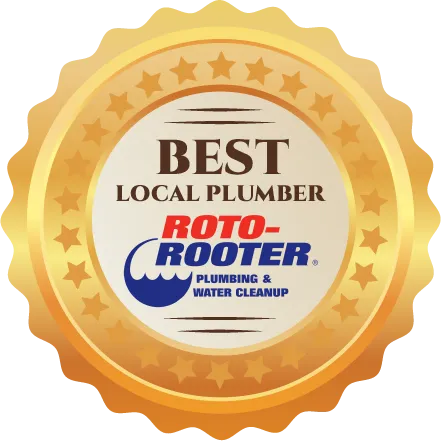Emergency Water Damage Kits Every St George Homeowner Should HaveWhat St George Homeowners Should Do Before Calling a Plumber for a Burst Pipe
As a homeowner in St. George, you understand the unique challenges posed by our climate and terrain when it comes to water damage, especially from burst pipes. Preparing an emergency water damage kit is crucial for minimizing both damage and stress during such events. Given the region’s susceptibility to extreme temperatures and occasional flooding, it’s important to tailor your kit to address these specific risks.
So, what should you include in this emergency kit, and how should you act before contacting a plumber? First, consider adding items like a sturdy bucket, absorbent towels, and a wet/dry vacuum to help manage any immediate water accumulation. Additionally, waterproof tarps can be useful for containing leaks or preventing further damage.
Before reaching out to a plumber, it’s essential to locate the main water shut-off valve and turn it off to prevent additional flooding. Assess the situation to determine the extent of the damage and whether it’s safe to stay in your home. If there are electrical hazards, it’s best to evacuate and wait for professional assistance. By taking these proactive steps and being prepared, you can effectively manage water damage emergencies in your St. George home.
Understanding the Importance of an Emergency Water Damage Kit
When unexpected water damage strikes, particularly in areas prone to heavy rainfall or flooding, having an emergency water damage kit can significantly reduce chaos and loss. Residents in regions affected by seasonal storms or rising water levels will feel more in control when they’re prepared for such situations. A well-stocked kit allows you to react swiftly, minimizing further damage and potentially lowering repair costs.
In locations where flooding is more common, every second counts when water begins to seep into your home. Your kit provides essential tools to address the problem promptly. You can stop the source of water intrusion, contain the damage, and begin the drying process immediately.
Moreover, having an emergency kit readily available can help you maintain calm and focus, ensuring that you address the situation effectively.
In communities that frequently deal with water-related issues, your preparedness can be a lifesaver. It can save you time, alleviate stress, and help you navigate the aftermath of unexpected water damage more smoothly. Taking the time to assemble an emergency water damage kit tailored to your local challenges can make all the difference when disaster strikes.
Essential Items to Include in Your Kit
An effective emergency water damage kit is your first line of defense against unexpected flooding, which can be a common issue in areas prone to heavy rainfall or near bodies of water.
It’s important to ensure your kit is well-stocked with essential items that can help you tackle water issues quickly and efficiently. Here are three critical items to include in your kit:
- Waterproof Tarps – Given the likelihood of sudden rainstorms in your region, waterproof tarps can be invaluable. They can help cover leaks or protect furniture and belongings from water damage.
- Wet/Dry Vacuum – In locales where flooding can occur, having a wet/dry vacuum is essential. This tool allows you to remove standing water swiftly, which is crucial for minimizing damage and preventing mold growth in your home.
- Mold Inhibitor Spray – The humid climate in specific areas can encourage mold growth. Having a mold inhibitor spray on hand allows you to treat any damp areas to prevent mold from taking hold after the water is cleared.
Equipping yourself with these items will provide peace of mind when dealing with water emergencies in your area.
How to Assess the Damage Before Calling a Plumber
After addressing immediate water issues with your emergency kit, assessing the damage before contacting a plumber is crucial.
Begin by pinpointing the source of the leak. In regions prone to heavy rainfall or flooding, such as coastal areas, check walls, floors, and ceilings for discoloration or bubbling paint, as these may indicate water infiltration. Pay special attention to your belongings, as items like furniture and electronics can suffer significant damage in humid climates.
Next, evaluate the extent of the water damage. If you notice pooling water, it’s essential to remove it promptly to prevent further complications, especially in areas where mold growth is a concern.
Consider any structural issues, such as sagging ceilings or warped floors, which may be exacerbated by local weather conditions. Document everything with photos, as this information will help the plumber better understand the situation when you call, making their job easier and potentially saving you time and resources.
Steps to Take Immediately After Discovering Water Damage
As soon as you discover water damage, it’s essential to act quickly to minimize its impact, especially considering the unique challenges that can arise from local environmental conditions.
Start by taking these immediate steps:
- Shut off the water source: Locate the main water shut-off valve and turn it off to prevent further damage. In areas prone to heavy rainfall or flooding, knowing the location of this valve in advance can be crucial.
- Remove valuables: Move furniture, electronics, and personal items away from the affected area to prevent further loss. In regions with high humidity, swift action is even more important as moisture can lead to rapid deterioration of items.
- Dry the area: Use towels, mops, or a wet/dry vacuum to soak up excess water. Open windows and turn on fans to promote airflow. In areas with a humid climate, consider using dehumidifiers to help expedite the drying process and prevent mold growth.
Taking these steps can greatly reduce the extent of the damage and help you regain control of the situation.
Safety Precautions to Consider
While addressing water damage can feel urgent, your safety should always be the top priority. Before entering any affected area, make sure to turn off the electricity to avoid the risk of electric shock, especially in regions prone to flooding where water levels can rise quickly.
If the water is potentially contaminated, such as from a nearby sewage overflow, be sure to wear rubber gloves and a mask for protection. Keep children and pets at a safe distance until the area is deemed secure.
In locations with older infrastructure, it’s critical to check for structural damage, as buildings may not withstand water intrusion as well. Avoid walking on soggy floors, as they can be unstable and may give way.
In humid environments, the risk of mold growth increases, so ensure proper ventilation by opening windows or using fans to circulate air.
Lastly, if you encounter any hazardous materials or chemicals, don’t attempt to handle them yourself. Always prioritize your well-being, and take these safety precautions seriously to prevent injuries during the cleanup process.
When to Call a Professional for Help
Knowing when to call a professional can save you time, money, and further damage to your home. If you encounter any of the following situations, don’t hesitate to reach out for expert help:
1. Uncontrollable Water Flow: If water is gushing from a burst pipe and you can’t stop it, call a plumber immediately.
In regions prone to heavy rainfall or flooding, quick action is crucial to prevent extensive water damage.
2. Extensive Damage: If you notice significant water damage affecting multiple rooms, a professional can assess and manage the situation effectively.
In areas with older homes, hidden leaks can be common, making it important to address any signs of water damage promptly.
3. Mold Growth: If you spot mold or mildew developing, it’s essential to call a specialist to prevent health risks and further spread.
In humid climates, mold can thrive quickly, so addressing it early can save you from more serious health and structural issues down the line.
Tips for Preventing Future Water Damage
To prevent future water damage in your home, it’s crucial to stay proactive about maintenance and repairs, especially considering the local climate and weather patterns.
Begin by regularly inspecting your roof for missing shingles or leaks, as heavy rains and storms can exacerbate these issues. Clean your gutters and downspouts to ensure proper drainage, and be vigilant for any signs of water pooling around your foundation, which can occur during spring thaw or summer storms.
Inside your home, monitor your plumbing for leaks, particularly in areas that may be prone to freezing temperatures during winter months. Replace worn-out hoses on appliances to prevent unexpected failures.
Installing water detection devices near potential problem areas like the basement or laundry room can provide an early warning for issues. Additionally, ensure your sump pump is functioning correctly, particularly during periods of heavy rainfall, as local conditions may lead to increased water table levels.
Keep an eye on humidity levels in your home, especially during humid summer months, as elevated moisture can lead to mold growth. Utilizing a dehumidifier can help maintain balanced humidity levels and protect your home.
Conclusion
To sum up, having an emergency water damage kit tailored for the unique challenges faced by St George homeowners and knowing the right steps to take when disaster strikes can save both time and money. With the area’s variable climate, unexpected flash floods or rapid snowmelt can lead to water damage, so it’s crucial to evaluate the situation and take immediate action. This can help minimize losses while awaiting a plumber’s assistance. Always prioritize safety and ensure your kit is stocked with essential items, such as waterproof tarps, a sump pump, and absorbent materials designed for the local environment. By following these steps, you will be better equipped for any future water emergencies, keeping your home safe and secure. Stay proactive and protect your valuable investment!
Tags





